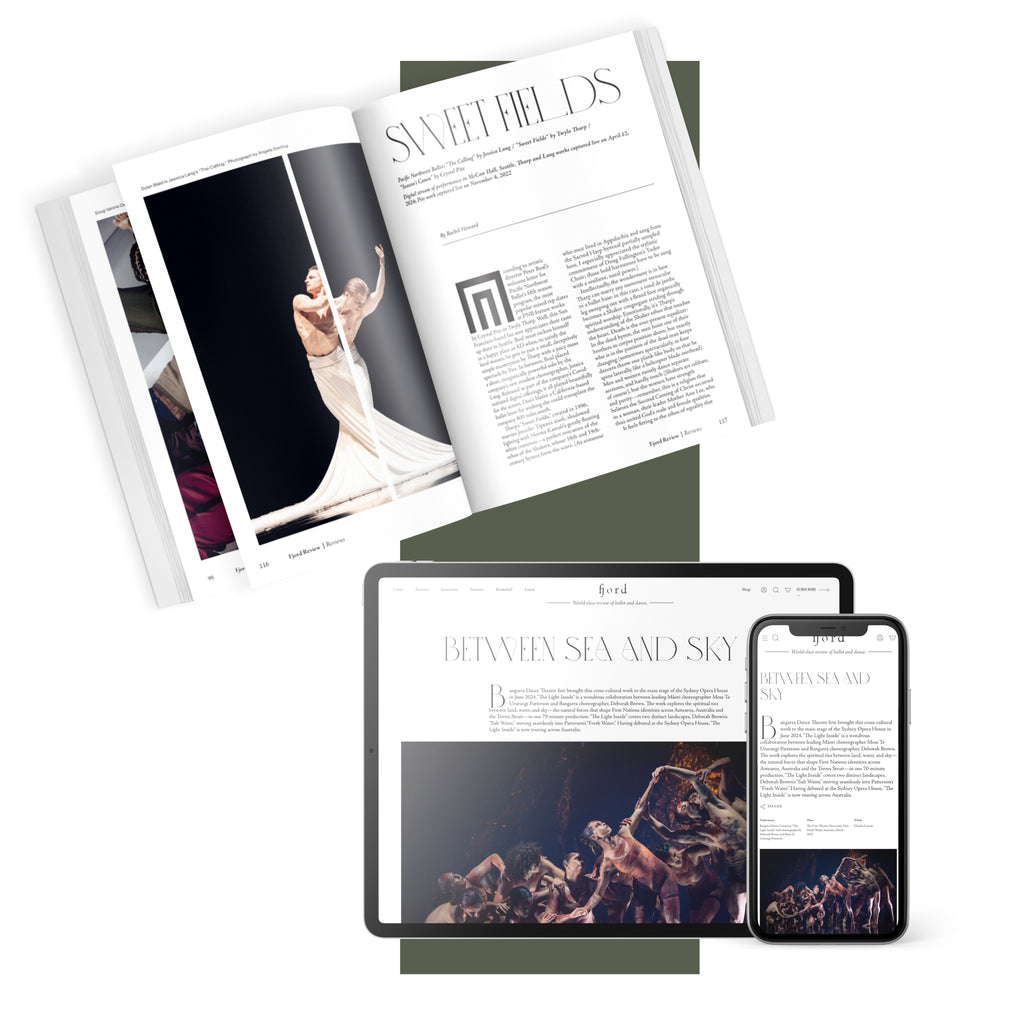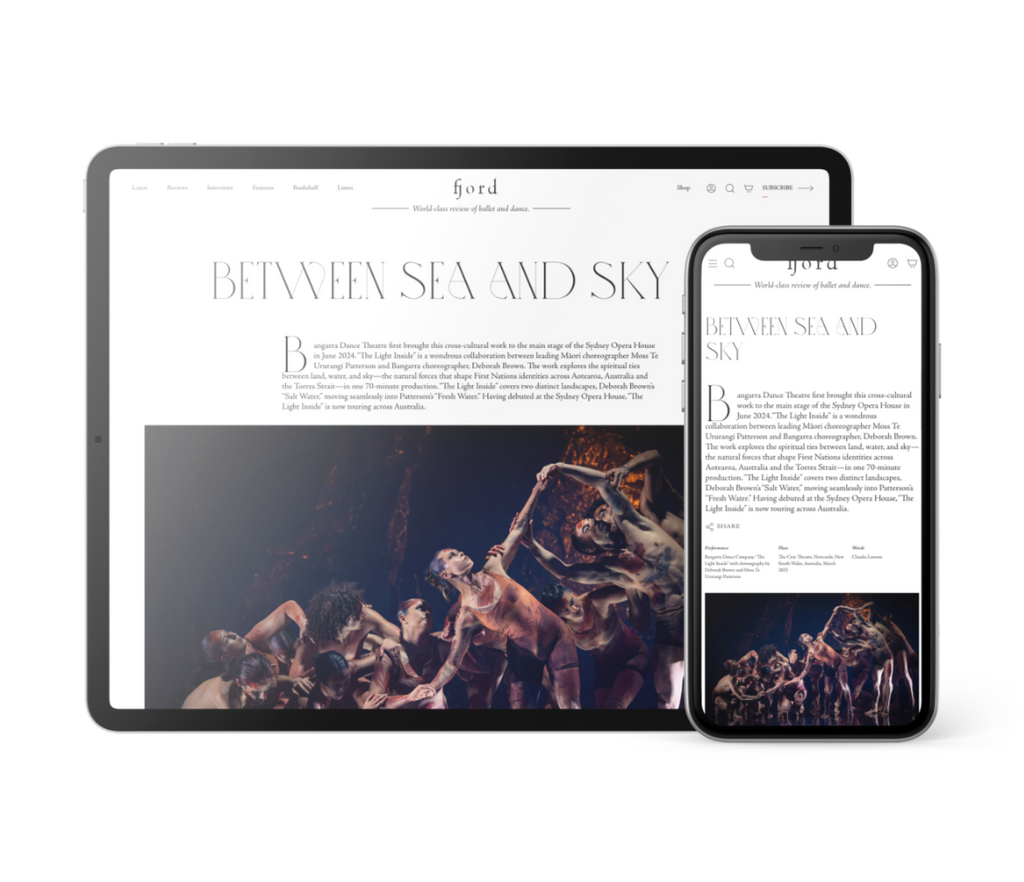Natural Histories
Miriam Miller steps into the center and raises her arm with deliberation, pressing her palm upward to the vaulted Gothic ceiling of the cathedral.
Continue Reading
World-class review of ballet and dance.
Smaïl Kanouté is a French-Malian graphic designer, dancer, and choreographer based in Paris, and the founder of a Compagnie Vivons, which combines visual art, film, and live performance. His background in dance is interesting: While training at the National School of Decorative Arts, he had a residency in Rio de Janeiro, and it was there, inspired by rich dance cultures of Brazil, that he began dancing. As he has said in interviews, he is largely self-taught; his approach incorporates elements of contemporary dance and various urban forms related to hip hop, including the Brazilian baile funk and pasinho, krump, and popping.
Performance
Place
Words



“Uncommonly intelligent, substantial coverage.”
Your weekly source for world-class dance reviews, interviews, articles, and more.
Already a paid subscriber? Login

Miriam Miller steps into the center and raises her arm with deliberation, pressing her palm upward to the vaulted Gothic ceiling of the cathedral.
Continue ReadingIn a series called “Just Dance” on Nowness—a site I sometimes visit to see what’s up in the world of “genre busting” dance films that make it onto this stylized platform—I sometimes find little gems that quietly rock my world.
Continue ReadingBack in October, New York City Ballet got a new cowboy. His arrival occurred in the final section of George Balanchine’s “Western Symphony.”
Continue ReadingWhen Richard Move enters from stage left, his presence is already monumental. In a long-sleeved gown, a wig swept in a dramatic topknot, and his eyes lined in striking swoops, the artist presents himself in the likeness of Martha Graham—though standing at 6’4, he has more than a foot on the late modern dance pioneer.
Continue Reading
comments